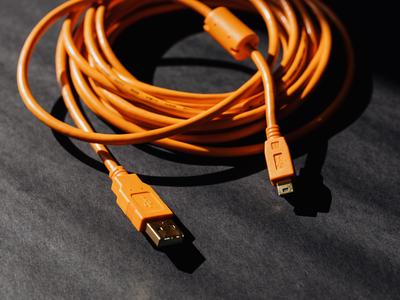
How image forensics can be used to close modern slavery cases
By Sherrie Caltagirone from Global Emancipation Network & Matt Burns from CameraForensics
21 June, 2022
By Nathaniel Trevivian

The cloud enables so much of what we do.
It allows us to complete R&D projects and streamline the user experience, all while bringing in greater capabilities for security monitoring.
But how does the cloud give us greater flexibility than traditional on-premises infrastructures? Why do we need advanced monitoring capabilities? And what benefits does this bring to both the CameraForensics team and investigators using our tools?
While it can bring a wide range of tactical advantages to our work, our use of the cloud broadly takes on two primary roles:
Learn more about how we harness cloud infrastructure, and why, below.
We get more data and intelligence to work with everyday thanks to our web crawling expertise.
Although this is a huge positive for helping more victims, there are significant challenges if legacy systems are used. Actions become more time consuming, workflows don’t function in harmony, and storage becomes difficult. For scaling datasets that often exceed millions of rows (a scale that we refer to as big data), these are big barriers.
Many enterprises have reacted to the rise of big data by turning to Machine Learning classifiers for quicker, efficient, and accurate processing – all made possible by introducing extremely fast GPUs. However, owning an on-prem GPU can require elastic search clusters costly investment. In addition, on-prem technologies can limit flexibility and restrict agile companies that want to react to the latest data, no matter where they are.
With a cloud-hosted infrastructure, we can more easily integrate specialised GPUs from any location. Thanks to this access, we can complete complicated tasks such as our R&D research, faster than ever. For our investigators, this reduces the need to wait for time-consuming research, and gives them quicker access to vital tools that may help identify and safeguard victims.
A cloud-based infrastructure offers us another pivotal benefit – flexible scalability.
Traditionally, if we wanted to run specific software, we’d need to think about where it’s running, and what we were running it on. Using on-prem solutions, we would need to have all these dependencies met before we can begin. What’s more, if we needed to use physical GPUs, they must be bought, correctly integrated, and made secure – a process that’s usually time-consuming, frustrating, and requiring lots of hands-on attention.
Cloud-based GPUs give us an agile solution when we need it most. Such as, when our datasets and sources change in real time, or when we find new processes that require additional integrations.
Working with cloud infrastructure allows our teams to offload demands such as physical maintenance, while ensuring that all processes can be completed reliably, regardless of data sizes. If we need more from our cloud solution – such as what’s required to complete a particularly challenging and intensive R&D project - we’ll simply provision additional resources, and take it down again it when it’s no longer required.
Learn more: Why are we committed to research and development?
Our system-wide monitoring and metrics allow us to identify opportunities like performance optimisation and workflow improvements. In the event of unexpected issues or new developments, using the cloud also helps us to respond to new problems quicker and easier.
Making use of Elasticsearch clusters means that we can provide the fastest and most capable results for our users, powering much of our work and allowing us to perform much of what we do. Our Elasticsearch clusters allow us to process data such as:
However, while we currently make use of these Elasticsearch clusters, they can also cause issues when we encounter new challenges or risks – such as disks filling up. When this happens, multiple shards will move around and disrupt both our work and the work of our users.
The answer: cloud-based monitoring tools that can give us a complete 360-view.
Using our own infrastructure-as-code scripts fully tailored to our platform gave us a distinctive overview of our performance, snags, and upcoming threats.
As a result, when an issue does arise, we can discern if it’s a disk space issue, a particularly heavy query, or something more serious. Empowered by this understanding, we can act with confidence to get our platforms back online.
The security of our tools is more than necessary, giving users the confidence to perform critical research on a trusted platform, and ensuring that any sensitive data remains confidential.
With cloud-enabled and fully automated security alerts, we can make sure that any weaknesses or areas of potential risk are quickly flagged and resolved. This benefits us and our users who can trust our platform is as airtight as possible.
Another great advantage of our cloud-based security approach is that it gives our team more resources to focus on our R&D activity to enhance our platform, without sacrificing integrity or responsiveness.
We’re passionate about developing our technologies and forging strong international partnerships in order to continuously drive positive change.
To learn more about our platform capabilities, as well as our other areas of expertise, take a look at our full R&D page here.